When to Replace Brake Hoses or Cables: A DIY Inspection Guide
Brakes are your vehicle’s most critical safety component. While brake pads and rotors often receive the most attention, brake hoses and cables play an equally vital role in ensuring your car stops effectively and safely. Knowing when to replace brake hoses or cables is essential for every driver, especially if you want to avoid major failures or expensive repairs down the road.
In this DIY inspection guide, we’ll walk you through how to check your brake hoses and cables, signs of wear, and when it’s best to call in brake specialists in Auckland like the team at Sterling NZ.
What Are Brake Hoses and Cables?
Brake hoses are flexible tubes that carry brake fluid from the master cylinder to the brake calipers or wheel cylinders. These hoses must endure high pressure and extreme temperatures. Over time, they can wear out, crack, or even leak.
Brake cables, on the other hand, are typically part of the handbrake (parking brake) system and operate mechanically rather than hydraulically. If you use your handbrake regularly or park on slopes, ensuring your cables are functioning properly is crucial.
Why Brake Hoses and Cables Fail
Even if your brake pads and discs are in great shape, worn-out hoses or cables can render your braking system ineffective. Common reasons for failure include:
- Age and wear: Rubber deteriorates over time due to heat and fluid pressure.
- Corrosion: Metal cables are vulnerable to rust, especially in wet or coastal climates.
- Abrasion: Hoses or cables rubbing against suspension parts can wear out faster.
- Fluid contamination: Brake fluid attracts moisture, which can damage internal components.
DIY Brake Hose & Cable Inspection Checklist
Regular inspections can help you catch issues before they become dangerous. Here’s a step-by-step checklist for a DIY inspection:
1. Visual Inspection of Brake Hoses
- Look for cracks, bulges, or fraying on the hose surface.
- Check for fluid leaks around the connection points.
- Flex the hose gently to see if it feels brittle or too soft.
2. Inspect Brake Cables
- Inspect the handbrake cable under the car for signs of rust, fraying, or looseness.
- Pull the handbrake lever to see if it feels loose or travels too far up.
- Test the handbrake on a slope to check holding ability.
3. Brake Fluid Check
- Look at the brake fluid level in the master cylinder reservoir.
- Discoloured fluid may indicate hose degradation or moisture contamination.
If any of these signs are present, it’s time to consult a brake specialist in Auckland.
When to Replace Brake Hoses or Cables
Here are some clear signs it’s time to consider replacement:
- Soft brake pedal: Could indicate fluid leakage or internal hose failure.
- Spongy brake feel: Often a result of hose expansion under pressure.
- Uneven braking: If one wheel brakes harder than the other.
- Handbrake not holding: Points to a stretched or broken cable.
Professional mechanics recommend replacing brake hoses every 5-7 years, even if they appear visually fine. It’s better to be proactive than reactive when it comes to brake safety.
Can You Replace Brake Hoses or Cables Yourself?
If you’re confident with DIY mechanical work, you can replace brake hoses or cables yourself. However, it requires precision, the right tools, and a safe environment. Mistakes in brake repairs can be life-threatening.
Tasks like bleeding the brake system or adjusting tension on cables can be tricky, and that’s why many opt to hire experienced brake repairs specialists in Auckland, such as the trusted team at Sterling NZ.
Benefits of Professional Brake Servicing
If you’re not confident handling brake repairs on your own, it’s always best to seek professional help. Here are a few reasons to choose expert help:
- Brake pad replacement in Auckland is often done alongside hose checks.
- Specialists use diagnostic tools to check for hidden wear.
- Brake Discs & Pads Servicing is usually bundled with a complete system inspection.
- Professionals offer warranties on parts and labour.
Sterling NZ offers the cheapest brake pads replacement in Auckland while maintaining high service standards.
Safety Tips for Brake Maintenance
- Always use jack stands: Never rely on a jack alone when working under a car.
- Use the right fluid: Only use the manufacturer-recommended brake fluid.
- Wear gloves and safety glasses when handling brake components.
- Check both front and rear systems for balance and full performance.
FAQs
Q1: How often should I check my brake hoses and cables?
Ideally, inspect them during every oil change or every 6 months. Replace hoses every 5-7 years or sooner if wear is visible.
Q2: Can I drive with a leaking brake hose?
No. A leaking hose can lead to total brake failure. If you suspect a leak, do not drive the vehicle and have it towed to a repair shop.
Q3: Are handbrake cables expensive to replace?
Handbrake cable replacements are relatively affordable. Labour costs may vary, but they are usually quicker and cheaper than full hydraulic repairs.
Conclusion
Knowing when to replace brake hoses or cables can save you from major safety risks and expensive repairs. While regular inspections can be done at home, issues should be addressed quickly with the help of professionals.
For reliable service, transparent pricing, and expert workmanship, consider the team at Sterling NZ. Whether it’s a full brake system overhaul or a quick brake pad replacement in Auckland, they offer some of the best brake repairs in Auckland.
Visit Sterling NZ today to book a brake check or speak to an experienced technician.
When to Replace Brake Hoses or Cables: A DIY Inspection Guide Read More »
 NZD
NZD
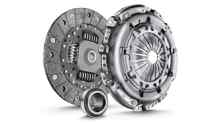
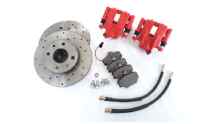
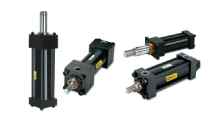
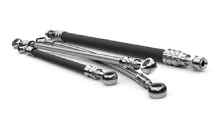
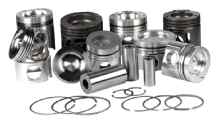
.jpg)
.jpg)
.jpg)
.jpg)

.jpg)
.jpg)






